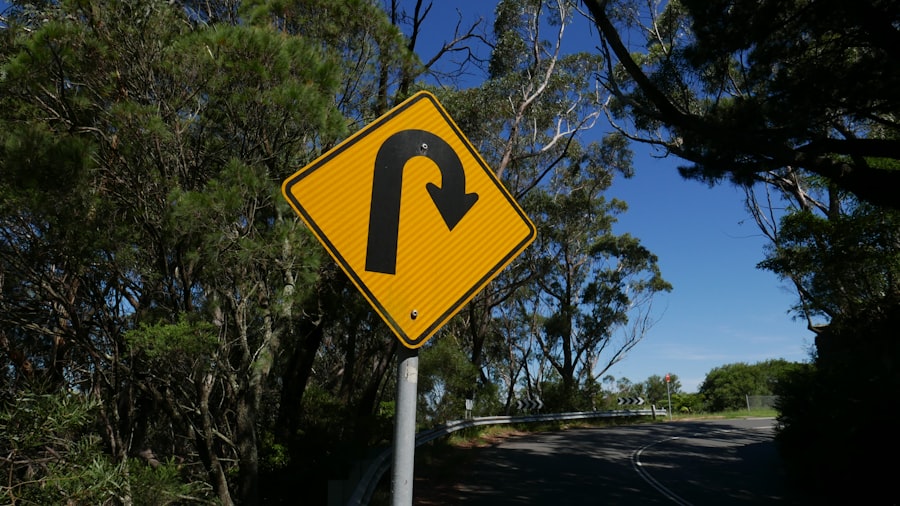Las Vegas, Nevada is a major city known for its entertainment, gambling, and tourism industries. Located in the Mojave Desert, it is the most populous city in Nevada and the 25th-most populous city in the United States. The Las Vegas Strip, a 4.2-mile stretch of Las Vegas Boulevard, is home to many of the city’s largest hotel-casinos and resorts.
The city’s economy is primarily driven by tourism, with millions of visitors annually attracted to its casinos, hotels, restaurants, and entertainment venues. Las Vegas hosts numerous conventions and trade shows throughout the year, making it a significant destination for business travelers as well. Las Vegas offers a wide variety of dining options, ranging from casual eateries to fine dining establishments run by celebrity chefs.
The city is also known for its all-you-can-eat buffets, which are popular among tourists and locals alike. Beyond the urban center, Las Vegas is surrounded by natural attractions. Red Rock Canyon National Conservation Area, located about 15 miles west of the city, offers hiking trails and scenic drives.
Lake Mead, the largest reservoir in the United States by volume, is situated about 30 miles southeast of Las Vegas and provides opportunities for boating, fishing, and other water activities. The city’s entertainment options include live music performances, magic shows, and large-scale productions by companies such as Cirque du Soleil. Notable attractions include the Bellagio Fountains, a choreographed water feature, and the High Roller, an observation wheel that stands 550 feet tall.
Las Vegas has a hot desert climate, characterized by long, hot summers and short, mild winters. The city receives very little rainfall, averaging less than 5 inches annually.
Key Takeaways
- Las Vegas offers a unique blend of entertainment, nightlife, and luxury experiences that attract visitors from around the world.
- When planning a road trip to Las Vegas, consider the best routes, accommodations, and attractions along the way to make the most of your journey.
- Nevada is home to a variety of natural wonders, including the Grand Canyon, Hoover Dam, and Red Rock Canyon, offering plenty of opportunities for outdoor exploration.
- Navigating the highways to Vegas requires careful planning and consideration of traffic, weather, and potential road closures.
- Upon arrival in Las Vegas, expect to be greeted by the iconic Strip, world-class hotels, casinos, and a vibrant atmosphere that never sleeps.
Planning your road trip to Las Vegas
Choosing the Right Route
Whether you’re coming from nearby California or embarking on a cross-country journey, there are several routes to consider, each offering its own unique sights and attractions.
Preparing Your Vehicle and Yourself
It’s also essential to ensure that your vehicle is in good working condition, with regular maintenance checks and sufficient fuel for the journey. When planning your road trip to Las Vegas, it’s important to consider the time of year and potential weather conditions. Summers in the desert can be scorching hot, so it’s crucial to stay hydrated and take regular breaks to avoid fatigue.
Packing Essentials and Enjoying the Journey
Additionally, it’s important to pack essentials such as sunscreen, sunglasses, and comfortable clothing for the journey. Along the way, there are several noteworthy stops to consider, such as the iconic Route 66, which offers a nostalgic glimpse into America’s past. Whether you’re traveling solo or with friends and family, a road trip to Las Vegas is an adventure that promises unforgettable memories and breathtaking scenery.
Exploring the attractions of Nevada

Nevada is a state brimming with natural beauty and diverse attractions that are worth exploring beyond the bright lights of Las Vegas. From the otherworldly landscapes of the Valley of Fire State Park to the majestic beauty of Lake Tahoe, there’s no shortage of natural wonders to discover. For outdoor enthusiasts, Nevada offers ample opportunities for hiking, camping, and water sports in its many state parks and recreational areas.
The state is also home to several historic sites and cultural attractions that offer insight into its rich heritage and storied past. One of Nevada’s most iconic attractions is the Hoover Dam, an engineering marvel that stands as a testament to human ingenuity. Visitors can take guided tours of the dam to learn about its history and significance, as well as enjoy stunning views of the Colorado River below.
For those seeking a taste of the Wild West, a visit to Virginia City offers a step back in time to the days of the silver mining boom. The town’s historic buildings and lively atmosphere provide a glimpse into Nevada’s colorful past. Whether you’re exploring the natural wonders or cultural landmarks of Nevada, there’s no shortage of attractions to captivate visitors and create lasting memories.
Navigating the highways to Vegas
| Highway | Distance (miles) | Estimated Time (hours) |
|---|---|---|
| I-15 | 270 | 4 |
| US-93 | 480 | 7 |
| US-95 | 300 | 5 |
Navigating the highways to Las Vegas requires careful planning and attention to detail to ensure a smooth and enjoyable journey. Depending on your starting point, there are several major highways that lead to Las Vegas, each offering its own unique scenery and potential stops along the way. Interstate 15 is one of the most popular routes to Las Vegas, connecting Southern California with Nevada and offering stunning desert vistas along the way.
For those coming from Arizona or Utah, Interstate 40 and Interstate 70 provide access to Las Vegas through scenic desert landscapes and mountainous terrain. When navigating the highways to Las Vegas, it’s important to be mindful of traffic conditions and potential road closures, especially during peak travel times. It’s also essential to plan for rest stops and fueling stations along the way to ensure a comfortable journey.
With proper planning and attention to road conditions, navigating the highways to Las Vegas can be an enjoyable part of the overall road trip experience.
What to expect when you arrive in Las Vegas
Upon arriving in Las Vegas, visitors can expect to be greeted by an electrifying atmosphere that is unlike any other city in the world. The iconic Las Vegas Strip is a sight to behold, with its dazzling array of towering hotels and casinos that light up the night sky. The city’s energy is palpable, drawing visitors into its vibrant streets filled with entertainment options for every taste.
From world-class shows and concerts to high-stakes gambling and gourmet dining, Las Vegas offers an endless array of experiences that cater to every whim. In addition to its renowned nightlife and entertainment options, Las Vegas also boasts a thriving arts and culture scene, with museums, galleries, and performing arts venues that showcase a diverse range of talent. Beyond the Strip, visitors can explore downtown Las Vegas, where they’ll find trendy bars, eclectic shops, and vibrant street art that adds to the city’s dynamic atmosphere.
Whether you’re seeking relaxation by the pool or non-stop excitement on the casino floor, Las Vegas offers an experience like no other.
The history and culture of Las Vegas, Nevada

A City of Entertainment
Las Vegas is synonymous with entertainment, and its history is deeply rooted in its ability to provide a unique and exciting experience for its visitors. From its early days as a railroad town to its current status as a global tourist destination, the city has consistently pushed the boundaries of what it means to entertain.
A Cultural Hub
In addition to its entertainment legacy, Las Vegas also has a vibrant cultural scene that celebrates diversity and creativity. The city is home to a thriving arts district that showcases local talent through galleries, studios, and public art installations. Visitors can also explore museums that delve into the city’s history and heritage, offering insight into its evolution from a desert outpost to a global tourist destination.
A Wealth of Cultural Experiences
Whether you’re interested in history, art, or entertainment, Las Vegas offers a wealth of cultural experiences that add depth to its glittering facade. From its iconic landmarks to its thriving arts district, the city provides a unique and enriching experience that goes beyond its reputation as a party destination.
Making the most of your time in Vegas
When visiting Las Vegas, it’s important to make the most of your time in this vibrant city by exploring all it has to offer. Beyond the famous casinos and nightlife, there are countless experiences waiting to be discovered. From taking in panoramic views from atop the Stratosphere Tower to indulging in world-class dining at celebrity chef restaurants, there’s no shortage of ways to create unforgettable memories in Las Vegas.
For those seeking relaxation, many of the city’s luxurious resorts offer spa treatments and poolside lounging for a tranquil escape from the hustle and bustle of the Strip. Additionally, visitors can explore nearby natural wonders such as Red Rock Canyon or take a day trip to the awe-inspiring Grand Canyon for an unforgettable adventure. Whether you’re seeking thrills on a zip line or seeking serenity in nature, Las Vegas offers something for everyone.
In conclusion, planning a road trip to Las Vegas offers an opportunity for adventure and discovery in one of America’s most iconic cities. From exploring Nevada’s natural wonders to navigating its highways en route to Sin City, there are countless experiences waiting to be had along the way. Once in Las Vegas, visitors can expect an electrifying atmosphere filled with entertainment options that cater to every taste.
Whether you’re drawn by its rich history or captivated by its modern-day allure, Las Vegas promises an unforgettable experience that will leave you longing for more.
If you’re interested in exploring the exciting events in Las Vegas, you may also want to check out this article on Nevada Today that unveils the excitement in Las Vegas. It’s a great way to get a comprehensive look at all the entertainment options available in the city.
FAQs
How far is Las Vegas from Los Angeles?
The distance between Las Vegas and Los Angeles is approximately 270 miles.
How long does it take to drive from Los Angeles to Las Vegas?
The drive from Los Angeles to Las Vegas takes around 4-5 hours, depending on traffic and road conditions.
What is the best route to take from Los Angeles to Las Vegas?
The most common route is to take Interstate 15, which is a direct highway connecting Los Angeles and Las Vegas.
Are there any alternative routes from Los Angeles to Las Vegas?
There are alternative routes, but Interstate 15 is the most direct and commonly used route for traveling between Los Angeles and Las Vegas.
What is the distance from San Francisco to Las Vegas?
The distance between San Francisco and Las Vegas is approximately 570 miles.
How long does it take to drive from San Francisco to Las Vegas?
The drive from San Francisco to Las Vegas takes around 8-9 hours, depending on traffic and road conditions.
What is the best route to take from San Francisco to Las Vegas?
The most common route is to take Interstate 5 south to Interstate 580 east, then connect to Interstate 205 east and eventually Interstate 5 south to Interstate 15, which leads directly to Las Vegas.
Are there any alternative routes from San Francisco to Las Vegas?
There are alternative routes, but the route mentioned above is the most direct and commonly used for traveling between San Francisco and Las Vegas.


